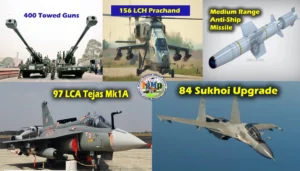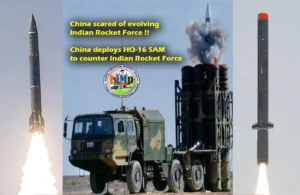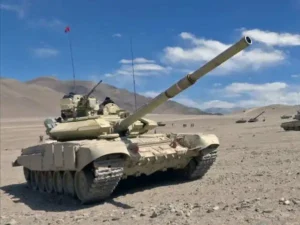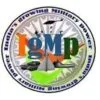Source : The Print
 |
| Chinese People’s Liberation Army Air Force (PLAAF) Sukhoi Su-30MKK (Above) and Indian Air Force Sukhoi Su-30MKI (Bottom) |
Concerns of air power violations in Ladakh entered the doors of military talks between India and China in early August 2022. Both sides blamed each other of violating the 1996 Agreement on Confidence-Building Measures along the Line of Actual Control. The agreement stipulates that combat aircraft, which includes fighter, bomber, reconnaissance, military trainer, armed helicopter and other armed aircraft, shall not fly within 10 km of the LAC.
In order to control escalation, establishing a separate hotline or leveraging existing ones is going to be explored as the way forward. However, to expect that a hotline can cope with the speed of fighter aircraft is an illusion. At best, it can serve as a mechanism to exchange information, after the incident.
From an Indian perspective, China’s extensive buildup of its air power capabilities in the Tibetan plateau is a major area of concern. The buildup of infrastructure and the deployment of military aircraft in large numbers have, in material terms, overcome the edge that the Indian Air Force (IAF) might have enjoyed earlier.
China’s playing a mind game
China’s growing military confrontation with the US and its allies in Taiwan, East Asia and South China Sea should provide a reminder to us that in Beijing’s broader strategic approach, a large-scale military confrontation with India could detract it from its primary area of strategic confrontation. India’s strategic planners may take note of the growth of China’s Comprehensive National Power in absolute terms, but they must also recognise that power, especially military power, is a relational variable that is context specific. The amount of power that China can bring against India is contingent on what it can spare, after it has catered for its primary interests. On the other hand, mainly due to its aggressive stance and arrogance, the array of nations that are coalescing against China is growing. Therefore, China’s relative power with India is being undermined.
China’s growing air power in Tibet is an ideal military tool to build an image of strength that can be utilised for continuous psychological dominance with minimum risk of provoking adverse reaction. Moreover, fighter aircraft in particular are the most photogenic in terms of conveying strength and projecting the image of power. It is ideal for intimidation and has been used extensively by China against Taiwan.
In essence, air power is more often part of a larger mind game.
The military effectiveness of air power also lies in the ideation capability in terms of evolved doctrine and the knowledge gained through experience. The IAF could probably be considered to have an edge in this context having had more combat experience and operated with air forces of technologically advanced nations. In addition, considering the altitudes obtained in Tibet, China’s air power would be handicapped against Indian aircraft, which would be operating from the plains. But in the psychological realm, China can leverage through the information domain the belief that India’s aeronautical industry and infrastructure are still trying to get their act together.
China agreeing to discuss air power violations must not only be viewed as emanating from its ploy to freeze the military confrontation on the Northern borders. The larger game is about keeping India confined to the sub-continent. Expanding the military threat on the Northern borders is what China is currently engaged in. Permanent forward deployment of its land power coupled with additional capacity of air power are the most visible manifestation of its political intentions.
Political leadership must step up
The challenge for India is to call China’s bluff in the Himalayas while speeding up growth of its maritime capabilities. China’s growing confrontation in other areas provide openings to speed up capability-building. Sporadic military pressure by China in the North is the operational design. Air and land violations must be responded to by counter-violations or quid pro quo because that is the language China understands best. Avoiding overreaction is also an Indian imperative, but it is easier said than done and calls for greater politico-military interaction. Unfortunately, such interactions continue to be lacking in continuity and depth. The major structural moves of Chief of Defence Staff (CDS) and Theatre Command System, initiated to improve the two crucial areas of civil-military relations and jointness among the armed forces, seem to have been confined to the back burner.
The main issue isn’t only about providing adequate resources for national defence, but about the political leadership being engaged and driving the reforms that it has recognised are sorely needed. It must move away from sloganeering to being outcome-centric. It has to recognise that time may not be on India’s side. There is no dearth of initiatives that are underway including in the defence manufacturing sector. But most of them remain paper tigers or the progress is tardy. Meanwhile, political patronage for reform has moved on, in pursuit of greener pastures of publicity and electoral gains.
The slowing down of much needed reforms in the arena of national defence should be politically and strategically unacceptable. Parliamentary oversight remains sterile and expectations on its effective performance are stymied by the dynamics of domestic politics. No doubt, the responsibility lies across various executive instruments. The political, bureaucratic and military leadership must lead, coordinate the whole of government approach and set the pace. It is a necessity and not a choice that must animate the spirit of those who wield the reins of power as we celebrate India’s 76th Independence anniversary.






